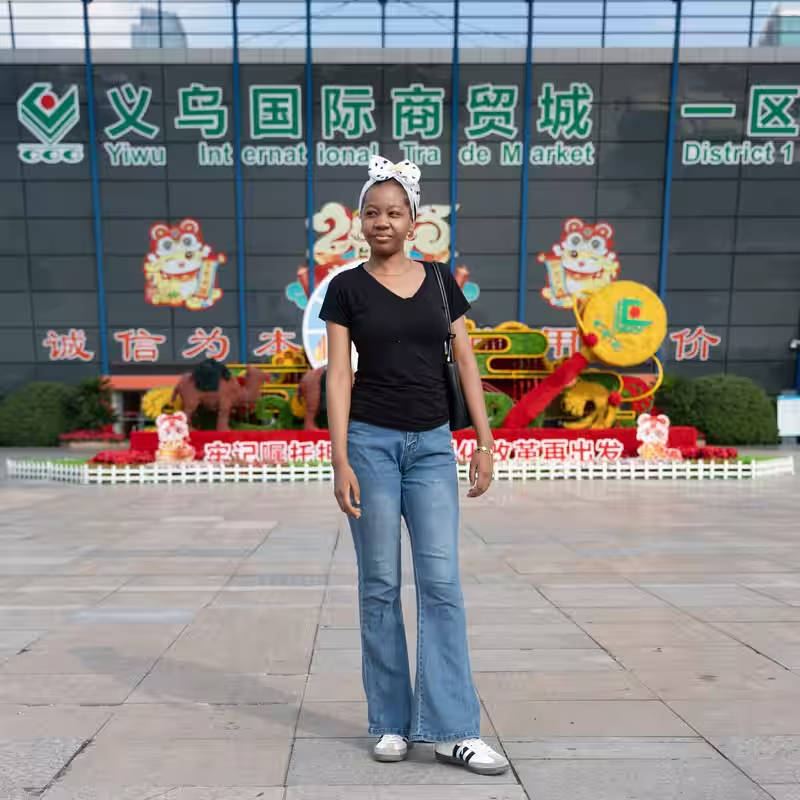Table of Contents
- China Tariffs Spark Global Trade Shift
- Rhoda Nghelembi’s Rise from Middlemen to Direct Sourcing
- Yiwu: The Global Wholesale Epicenter
- China’s Quiet Trade Expansion Strategy
- Winners and Losers in the New Trade Order
- Sources
China Tariffs Spark Global Trade Shift
As the U.S. tightens its grip with sweeping tariffs on Chinese goods under President Trump’s latest trade policies, an unexpected beneficiary has emerged thousands of miles away: entrepreneurs in Africa and Southeast Asia.
Once dubbed the “China Shock” for its disruptive impact on American manufacturing, China’s export machine isn’t slowing down—it’s rerouting. With the U.S. market becoming less accessible, Beijing is deepening ties with developing economies through free trade agreements and infrastructure investments.
Rhoda Nghelembi’s Rise from Middlemen to Direct Sourcing
Meet Rhoda Nghelembi, a 26-year-old entrepreneur from Tanzania who’s turned global trade turbulence into opportunity. Starting with home appliances and dinnerware sold in Dar es Salaam, she initially relied on local middlemen—until she discovered they were sourcing everything from China.
“China is the center of everything,” Nghelembi told The New York Times during her seventh trip to the country. Now, she travels directly to Chinese markets to buy handbags, clothes, and jewelry at wholesale prices, cutting out markups and boosting her margins.
Her story reflects a broader trend: small business owners in the Global South are bypassing traditional supply chains and tapping straight into China’s manufacturing heartland.
Yiwu: The Global Wholesale Epicenter
Nghelembi’s destination? Yiwu—a city in China’s Zhejiang province that hosts six massive international trade centers. Known as the world’s largest wholesale market for small commodities, Yiwu draws buyers from over 200 countries.
Here, a single visit can yield containers full of goods ranging from LED lights to fashion accessories—all at prices that dwarf those available through intermediaries. For entrepreneurs like Nghelembi, Yiwu isn’t just a marketplace; it’s a launchpad.
China’s Quiet Trade Expansion Strategy
While Washington focuses on protectionism, Beijing is playing the long game. China has signed more than two dozen free trade agreements, many with developing nations overlooked by Western investors.
These deals often come bundled with infrastructure financing—ports, railways, industrial parks—that further entrench Chinese economic influence. The trade balance, however, remains lopsided: China exports far more than it imports from these partners.
“The contribution is very, very large to our economy,” noted an Indonesian economist, highlighting both the benefits and dependencies created by this model.
Winners and Losers in the New Trade Order
The impact varies by country. In Vietnam, Chinese trade has fueled growth. In Malaysia, local solar panel startups were undercut by cheaper imports. In Indonesia, entire garment industries have collapsed under the flood of low-cost Chinese textiles.
Yet for agile entrepreneurs like Nghelembi, the influx of affordable goods is a lifeline. She reinvests her profits into expanding her retail footprint across East Africa—proving that while tariffs reshape global flows, opportunity still finds a way.
Sources
The New York Times: Tariffs Are Reshaping China’s Trade. This Tanzanian Sees an Opportunity.




